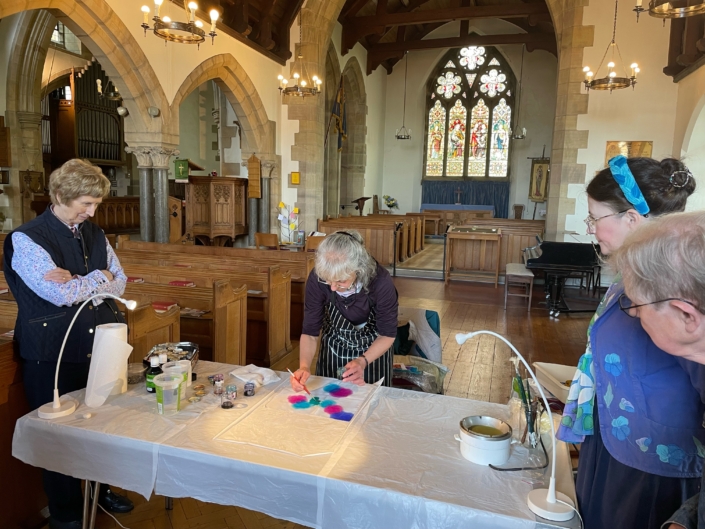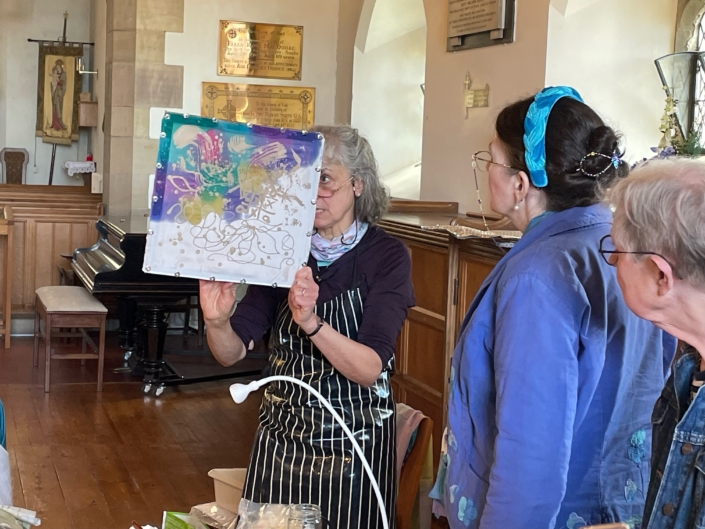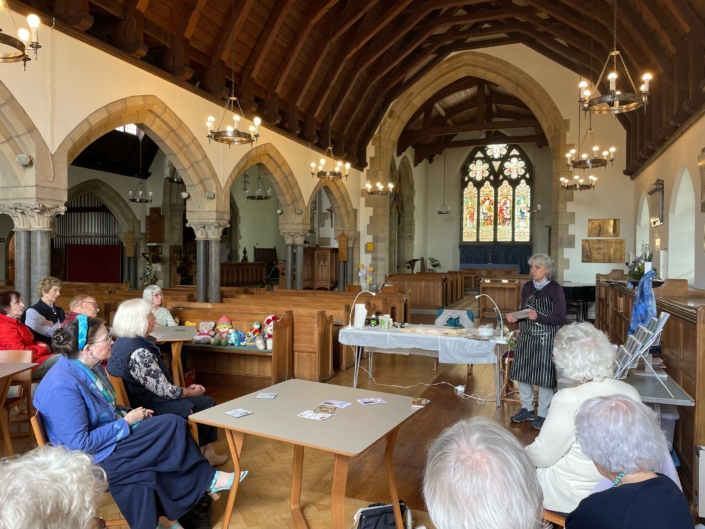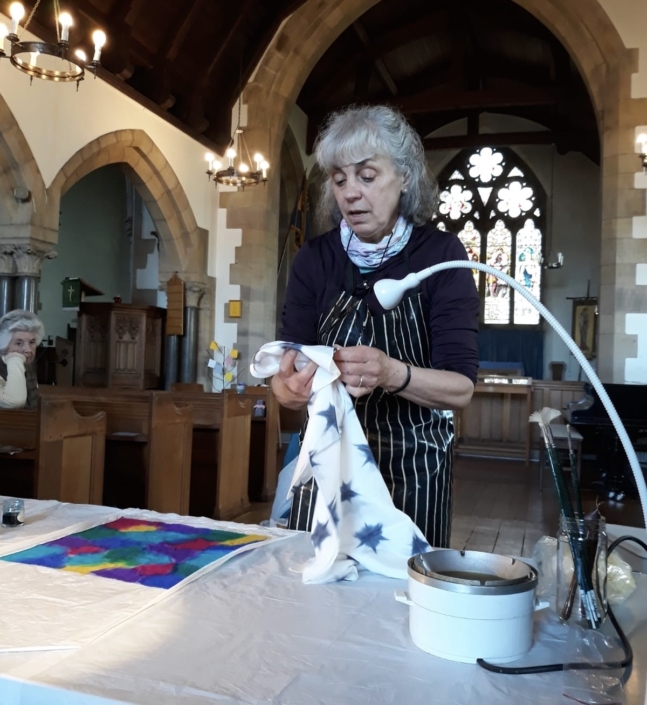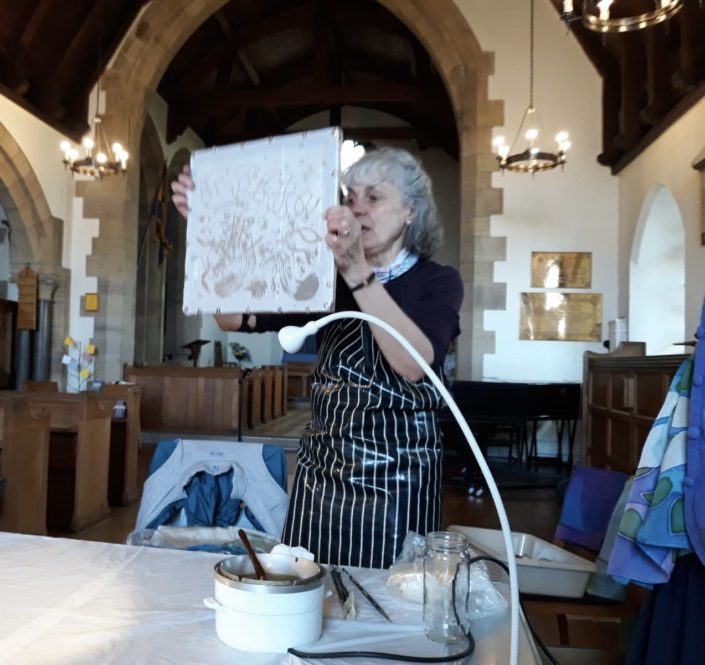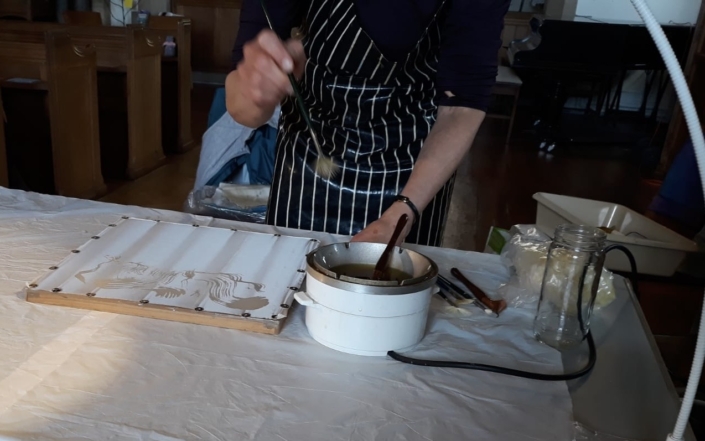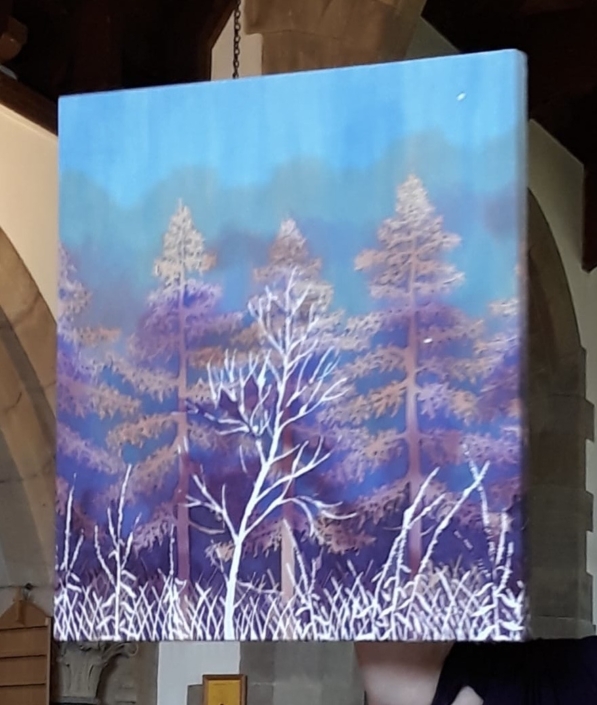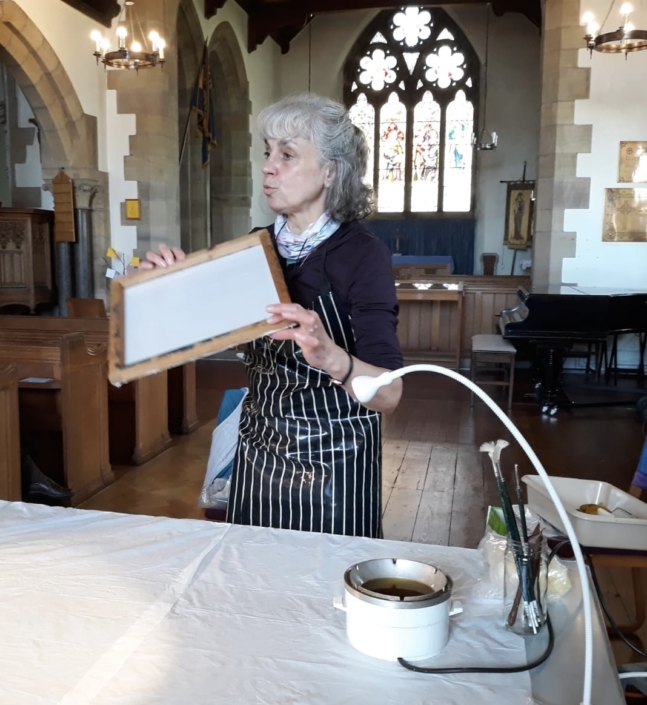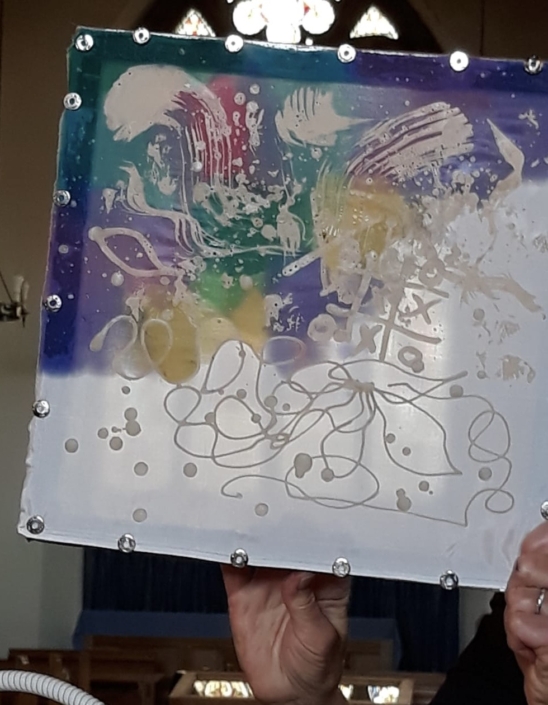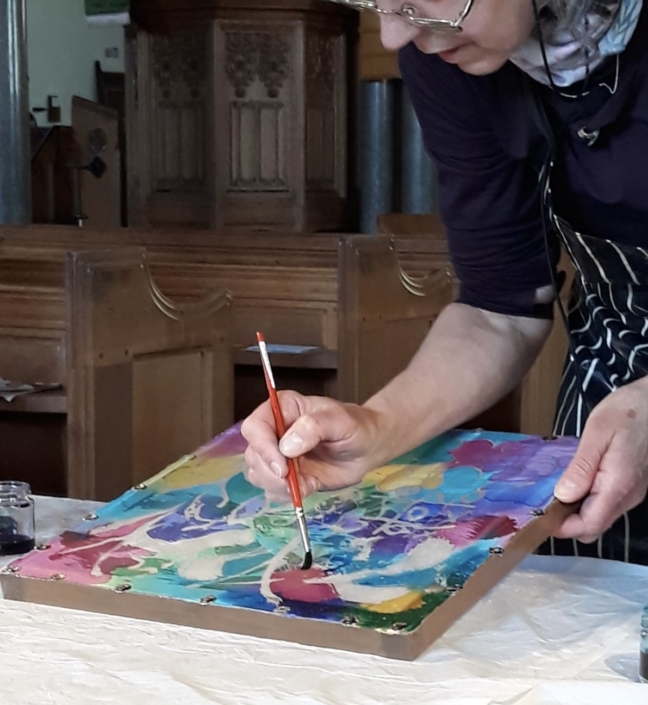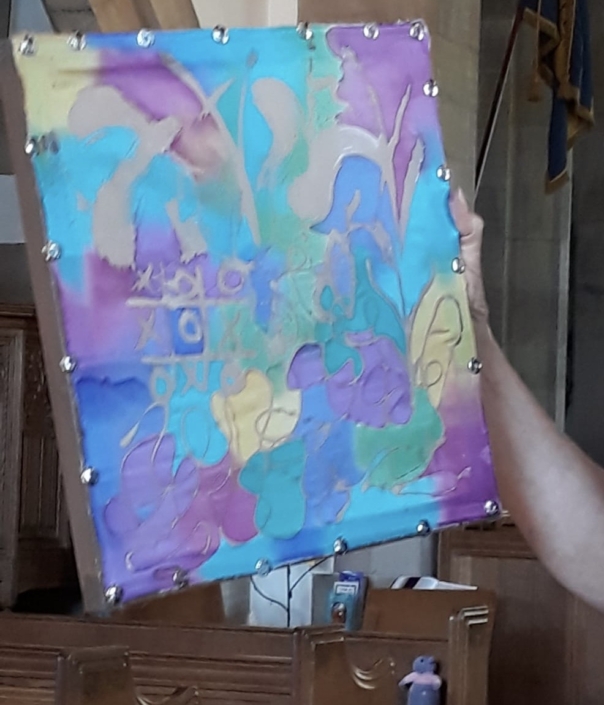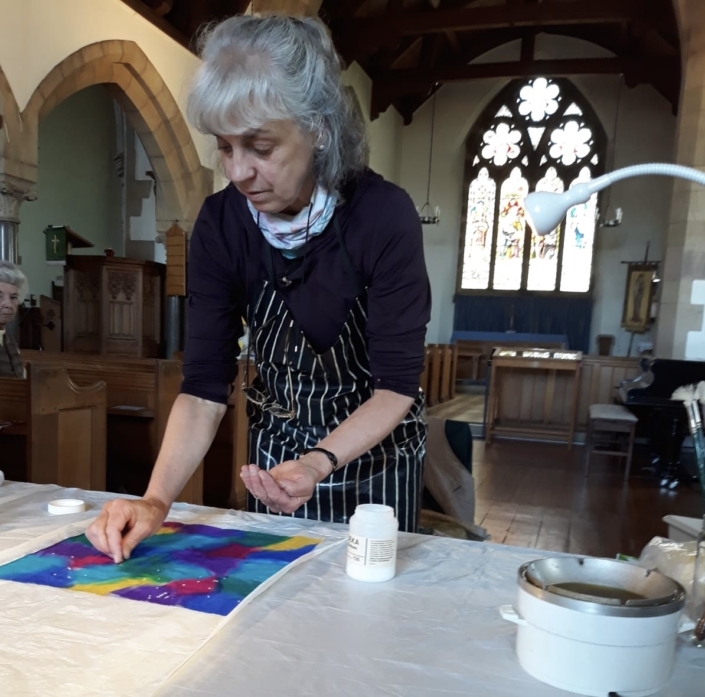“Woven wind”
What a fascinating afternoon we spent with Margaret Wilmot on Monday, listening to her tell us about the ancient art of silk painting.
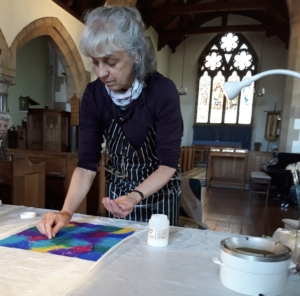 She began with the story of how silk was first woven in Central China 5000 years ago, where the women started spinning the thread from the cocoons of the silkworms which fed on the leaves of the white mulberry bushes. Once unwound each cocoon produces about one mile of thread. She described how silk became an important and valuable trading commodity – preferred to coinage or grain – along the Silk Route which opened to the west in the second century AD. It stretched originally from the ancient Chinese capital Xian 3500 miles across central Asia through deserts, steppes and mountainous regions to the eastern Mediterranean coast. The route eventually extended throughout central Europe to Istanbul, and 20 years ago Macclesfield in England was deemed to be its western end! She described how the traders would have used a variety of animals for the different terrains – camels, yaks, horses and donkeys.
She began with the story of how silk was first woven in Central China 5000 years ago, where the women started spinning the thread from the cocoons of the silkworms which fed on the leaves of the white mulberry bushes. Once unwound each cocoon produces about one mile of thread. She described how silk became an important and valuable trading commodity – preferred to coinage or grain – along the Silk Route which opened to the west in the second century AD. It stretched originally from the ancient Chinese capital Xian 3500 miles across central Asia through deserts, steppes and mountainous regions to the eastern Mediterranean coast. The route eventually extended throughout central Europe to Istanbul, and 20 years ago Macclesfield in England was deemed to be its western end! She described how the traders would have used a variety of animals for the different terrains – camels, yaks, horses and donkeys.
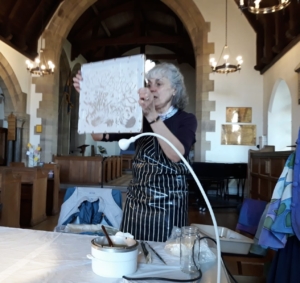 She then talked about the different types and weights of silk, and how some of the names reflect their origin – eg shantung (from the province of Shandong), and damask (from Chinese silk workers taken by the Arabs to Damascus). She told us how James 1 planted mulberry trees in what is now Hyde Park in the hope of introducing our own silk industry, but failed to realise that the silkworms fed only on the leaves of the white mulberry bushes rather than the black variety he had imported.
She then talked about the different types and weights of silk, and how some of the names reflect their origin – eg shantung (from the province of Shandong), and damask (from Chinese silk workers taken by the Arabs to Damascus). She told us how James 1 planted mulberry trees in what is now Hyde Park in the hope of introducing our own silk industry, but failed to realise that the silkworms fed only on the leaves of the white mulberry bushes rather than the black variety he had imported.
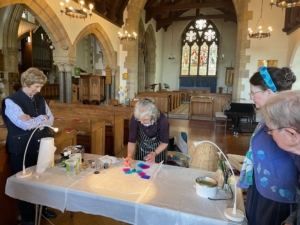 Margaret went on to describe how she learnt to paint on silk, and demonstrated her different techniques, using a range of coloured paints, salt crystals, beeswax and paraffin wax. She showed us the scarves she has made, all laboriously finished with a hand-rolled hem, and there was a range of hand-made cards on sale. We very much appreciated the time that had been taken in preparing and setting up the demonstration.
Margaret went on to describe how she learnt to paint on silk, and demonstrated her different techniques, using a range of coloured paints, salt crystals, beeswax and paraffin wax. She showed us the scarves she has made, all laboriously finished with a hand-rolled hem, and there was a range of hand-made cards on sale. We very much appreciated the time that had been taken in preparing and setting up the demonstration.
A very talented artist – she certainly fired our imagination, so much so that she has now agreed to run a one-day workshop. More details later!
The afternoon ended with a cuppa and a scone.

